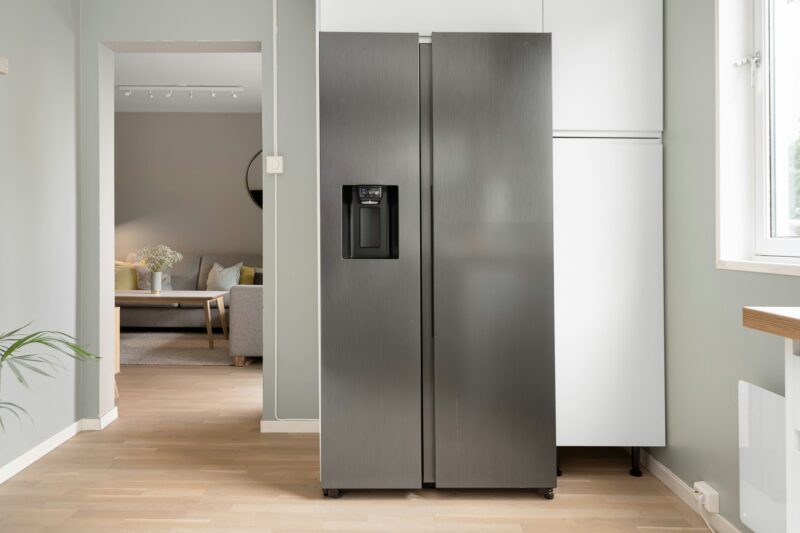Your refrigerator hums along quietly in the corner, working 24/7 to keep your food fresh and your drinks cold. But when it starts acting up? That’s when panic sets in. The good news is that most common fridge issues don’t happen overnight – they give you plenty of warning signs if you know what to look for.
As Benjamin Franklin wisely said, “An ounce of prevention is worth a pound of cure.” This couldn’t be more true when it comes to your refrigerator. Instead of waiting for a complete breakdown that leaves you scrambling for emergency repairs, let’s talk about catching these common fridge issues early.
Strange Noises That Signal Trouble
Ever notice how you can tell when something’s off just by the sound? Your fridge has its own language of clicks, hums, and whooshes. When these sounds change, it’s usually your appliance’s way of crying for help.
A grinding noise often means the condenser fan motor is struggling. Maybe there’s debris stuck in there, or perhaps the motor bearings are wearing out. If you notice a sudden spike in your energy bills, it could indicate that your refrigerator is consuming more power than before. Aging appliances tend to lose efficiency, making them work harder to maintain the desired temperature.
Don’t ignore that rattling either. Loose components can quickly become broken components, and broken components mean expensive repairs. For issues beyond basic cleaning and maintenance, professional Edmonton Fridge Repair can diagnose the problem before it escalates into something major.
Clicking sounds that happen repeatedly might indicate compressor problems. The compressor is essentially the heart of your cooling system – when it starts failing, your entire refrigerator’s performance suffers.
Temperature Fluctuations and What They Mean
Temperature consistency is everything in refrigeration. When your fridge starts playing hot and cold, food spoilage isn’t far behind. A 20-year-old refrigerator could use 1,700 kWh of electricity every year, compared with about 450 kWh for a similarly sized new ENERGY STAR model.
Your ideal refrigerator temperature should hover between 37°F and 40°F. The freezer needs to stay at 0°F. Anything outside these ranges, and you’re looking at potential problems.
The Freezer is Too Cold, Fridge Too Warm
This scenario screams thermostat malfunction or airflow blockage. Check if anything’s blocking the vents between your freezer and refrigerator compartments. Sometimes it’s as simple as rearranging some frozen pizza boxes.
If the airflow is clear but temperatures are still wonky, you might be dealing with a faulty damper control. This little component regulates how much cold air flows from the freezer to the fridge. When it breaks, you get an igloo on top and a lukewarm disaster below.
Door Seal Problems You Can’t Ignore
Here’s a simple test that’ll tell you everything: close a dollar bill in your refrigerator door so half sticks out. If you can pull it out easily without resistance, your door seal has given up the ghost.
Faulty door seals are energy vampires. They let cold air escape constantly, forcing your compressor to work overtime. For instance, refrigerators built in the 1970s may use five times more electricity than new, high-efficiency ones and may cost $200 per year more to run than new ENERGY STAR® models.
Those seals collect grime like nobody’s business too. Clean them monthly with warm soapy water. Conditioner works wonders for keeping rubber seals flexible – just like it does for your hair.
Look for cracks, tears, or warping. These aren’t just cosmetic issues. They’re direct routes for your money to leak out through higher energy bills.
Water Leaks and Puddle Formation
Nothing says “refrigerator emergency” quite like standing water on your kitchen floor. But before you panic, remember that not all leaks spell doom.
The most common culprit? A clogged defrost drain. Your fridge naturally creates condensation during its defrost cycle. When that drain gets plugged with food particles or ice, water backs up and finds creative ways to escape.
Interior vs Exterior Leaks
Interior leaks usually mean drainage issues or broken water lines (if you have an ice maker or water dispenser). These are manageable problems that don’t require replacing your entire appliance.
Exterior leaks, especially from the bottom, might indicate more serious issues like a cracked drain pan or failed internal components. Time matters here – water and electrical components don’t play well together.
Quick leak checklist:
- Check the drain pan underneath your fridge
- Inspect water line connections if applicable
- Look for ice buildup in the freezer that might be melting
- Examine the door seals for condensation buildup
Energy Bills Climbing? Your Fridge Might Be the Culprit
Today’s refrigerator makes up 7% of the average home’s total energy consumption annually. When that percentage starts creeping up, your fridge is working harder than it should.
Refrigerators over 15 years old could be costing you more than $80 per year to run. But even newer fridges can become energy hogs when components start failing.
Energy efficiency red flags:
- Compressor running constantly instead of cycling on and off
- Interior lights staying on when door closes
- Frost buildup in freezer requiring frequent defrosting
- Temperature settings that don’t match actual temperatures
As Samuel Johnson once noted, “The chains of habit are too weak to be felt until they are too strong to be broken.” Don’t let minor fridge issues become expensive habits.
Maintenance habits that save money:
- Clean condenser coils every six months
- Replace water filters as recommended
- Keep vents clear of obstructions
- Check and clean door seals monthly
- Monitor temperature settings seasonally
The key is staying ahead of problems instead of chasing them. Regular maintenance can help extend the life of your refrigerator. Most refrigerator issues start small and gradually worsen over time.
Remember, your refrigerator works harder during summer months and holiday seasons when you’re opening it more frequently. That’s when minor problems become major headaches. By addressing issues early – whether it’s cleaning those coils, replacing worn seals, or scheduling professional maintenance – you’re not just fixing problems; you’re preventing bigger ones down the road.
Bottom line: Don’t wait for complete failure. Those weird noises, temperature swings, and mysterious puddles are your fridge’s way of asking for help. Listen to what it’s telling you, and you’ll save yourself both money and the frustration of dealing with spoiled food and emergency repair calls. Deal with common fridge issues before they get worse.








